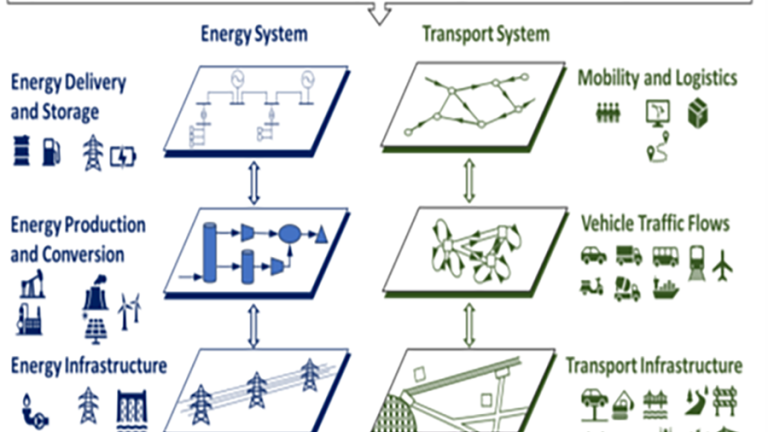
How a holistic strategy can minimize risks and disruptions
By Mark Dwortzan | MIT Center for Sustainability Science and Strategy
Global climate change and the ongoing transition to clean energy sources are delivering a one-two-punch to transportation systems, placing them at heightened risk for service disruptions and other hazards. As amplified extreme weather events such as floods and droughts cause costly bottlenecks in shipping routes and global supply chains, new transportation technologies from autonomous vehicles to alternative fuels introduce novel safety and security vulnerabilities.
Because today’s transportation planners do not typically coordinate with their counterparts in energy, information technology and other economic sectors, any vulnerabilities in those sectors could imperil transit operations. For example, power supply disruptions from a Category 5 hurricane could cause major delays in electrified transportation systems from high-speed trains to autonomous vehicle fleets. A more integrated approach to transportation planning would anticipate climate, energy and technology-driven risks that affect all involved sectors.
To that end, researchers at Chalmers University of Technology, the Massachusetts Institute of Technology, the Swedish National Road and Transport Research Institute, and Universidad Pontificia Comillas (Madrid) are calling for a new multi-sector dynamics (MSD) approach to transportation system planning centered on resilience, safety and sustainability. MSD—an emerging discipline for assessing compounding risks and potential tipping points across interconnected, co-evolving natural and societal systems—provides a comprehensive framework for mapping complex interactions among multiple economic sectors. Described in a commentary appearing in the journal Joule, this framework incorporates transportation, energy and digital infrastructure performance as well as societal impacts of system disruptions.
“A more holistic, MSD-based approach to transportation planning would enable decision-makers to better anticipate risks, prioritize investments and design adaptive policies to ensure system resilience in diverse regional contexts,” says MIT Center for Sustainability Science and Strategy Deputy Director and MIT Energy Initiative Senior Research Scientist Sergey Paltsev, a co-author of the study.
According to the commentary, the MSD framework can model how various system stressors—climate impacts, energy supply shortages, cybersecurity vulnerabilities and more—propagate across transportation, energy, digital infrastructure and other sectors involved in transportation planning. And an MSD-based research strategy could take transportation system resilience to the next level.
In a nutshell, that strategy boils down to four recommendations. First, develop and analyze scenarios that account for a wide range of potential service disruptions, fuel pathways and technology innovations, so as to identify transportation system vulnerabilities and enable proactive resilience planning. Second, coordinate infrastructure planning across transportation, energy and digital sectors to create flexible and adaptive energy systems. Integrated planning should guide investments in interdependent systems to enhance overall resilience and adaptability to evolving demands and disruptions. Third, design government policies and incentives that favor the development of a resilient fuel infrastructure, low-risk energy sources, and a safe digital infrastructure. Finally, develop standardized safety protocols for emerging transportation fuels such as hydrogen and ammonia to reduce risks from fuel leakage and technologies such as cybersecurity threats of autonomous vehicles.
“Implementing these recommendations will require a coordinated effort by stakeholders in government, industry and academia,” says Sonia Yeh, Professor in Transport and Energy Systems at Chalmers University of Technology, the study’s lead author. “The result: a more resilient transportation system that can withstand disruptions and evolve along with social, technological, environmental and policy changes.”
Image: Illustration of transportation as a system (in green) composed of various subsystems: mobility and logistics, vehicles, and transportation infrastructure, and the energy system (in blue), including energy delivery, storage, production and conversion, and infrastructure. The top bar illustrates emerging stressors impacting the transportation system, such as climate change, digital disruptions, and supply chain shocks. Traditional approaches do not fully capture the complex, cascading risks across these interconnected sectors, where a disruption in one area can propagate and amplify across others. (Source: Joule)





